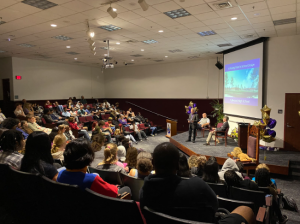World Religions Class Should be Offered in American High Schools
December 12, 2022
American Students should have the option to learn about world religions at school. By learning about different belief systems, students will become more culturally aware about subjects they are unfamiliar with.
Dishearteningly, it has been proven that Americans are generally unaware of global political and social topics. Researcher Patricia Donovan at the University of Buffalo stated that “the price we [Americans] pay for such ignorance and arrogance is death, maiming, [and] alienation,” in a study observing how much Americans know about the world.
Further research has contributed to the validity of the previous point. In the Pew Research Center’s 2010 “U.S. Religious Knowledge Survey,” it showed that Americans could only answer 16 out of 32 questions about world religions. Diving deeper, it was observed that atheists and agnostics averaged the most correct answers in the survey compared to those who identified with a specific religion. With the research conducted, it cannot be denied that American citizens have little knowledge on religions that do not pertain to their own.
Because of this country’s lack of global knowledge, it is essential for the young American people to learn and respect society’s cultural differences, as being ignorant of them is dangerous and can potentially harm others.
Although the Title VI of the Civil Rights Act of 1964 protects students of any religion from discrimination, including harassment, based on a student’s actual or perceived ancestry or ethnic characteristics, citizenship or residency in a country with a dominant religion or distinct religious identity, there are plenty cases of religious discrimination every single day. In a section of the U.S. Department of Education website titled “Religious Discrimination,” the Office for Civil Rights included Hindu, Jewish, Muslim, and Sikh students as examples of individuals who may often be “harassed for being viewed as part of a group that exhibits both ethnic and religious characteristics.”
The everyday occurrence of blatant ostracization in America must be stopped, and offering a world religions class in all high schools would help for various reasons. Not only can it promote tolerance and provide students with a greater appreciation for the diverse world around them, it can also teach kids an important life value: compassion. By incorporating world religions into the high school curriculum, it would further develop students’ critical thinking skills and help young people be more open-minded, thoughtful members of society.












